April 14, 2025 | 13:59 GMT +7
April 14, 2025 | 13:59 GMT +7
Hotline: 0913.378.918
April 14, 2025 | 13:59 GMT +7
Hotline: 0913.378.918
The technique of grafting secondary roots for fruit trees such as durian, lemon, grapefruit, orange, etc. has been recommended by scientists for many years. Recently, the movement to grow durian has developed strongly. Farmers pay great attention to choosing quality seedlings, including trees with many "legs."
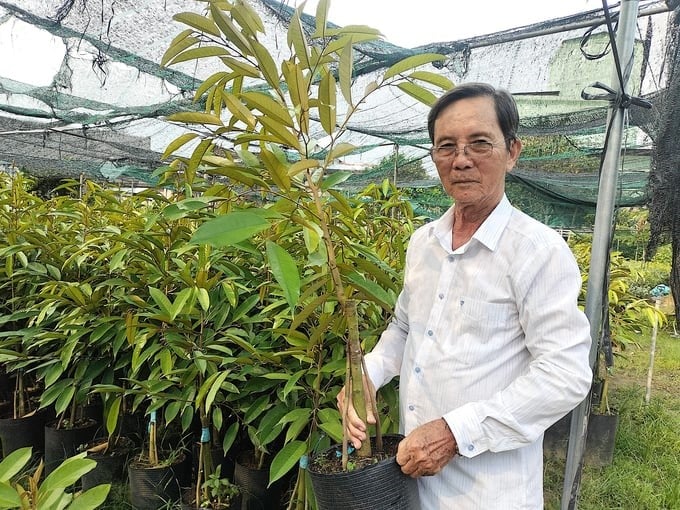
Mr. Nguyen Cong Thanh introduced durian seedlings grafted with two additional "legs." Photo: Minh Dam.
Mr. Nguyen Cong Thanh, owner of Tu Thanh seedling facility in Son Dinh commune, Cho Lach district, Ben Tre province, shared: "Currently, my customers in localities in the Central Highlands such as Dak Lak and Dak Nong have a tendency to order durian seedlings grafted with many secondary roots."
Mr. Thanh said that 30 years ago, when he bought durian seedlings in Thailand, they shared the technique of grafting secondary roots and gave him a "textbook" to practice grafting. Testing this method for decades in Mr. Thanh's garden and highland areas in the Southeast region has shown its effectiveness and many benefits.

Graft two additional secondary roots for durian from vegetative plants when young. Photo: Minh Dam.
Many secondary roots will help trees stand firmly in mountainous, windy areas. Trees with many root systems will enhance water and nutrient absorption, meeting the tree's needs. When the main root system is diseased, such as when the Phytophthora fungus attacks and damages the tree, there are still healthy secondary roots to absorb nutrients and maintain the tree's life. Therefore, if the garden owner detects the disease early, there will be more time to treat and restore the tree.
In addition, an important point is that if there are many rootstocks, durian trees almost never suffer from bottlenecks at the foot. Trees that become bottlenecked at the foot, when exposed to strong winds, can easily break in this position.
"Grafting secondary roots has many benefits. I see that the tree grows relatively well, and in the future there will be no bottleneck at the foot. Because when the tree grows up, there will be 2-3 additional secondary roots along with the main root that merge into one block, so the bottleneck ratio is almost non-existent. This method has been around for a long time, but not recently.
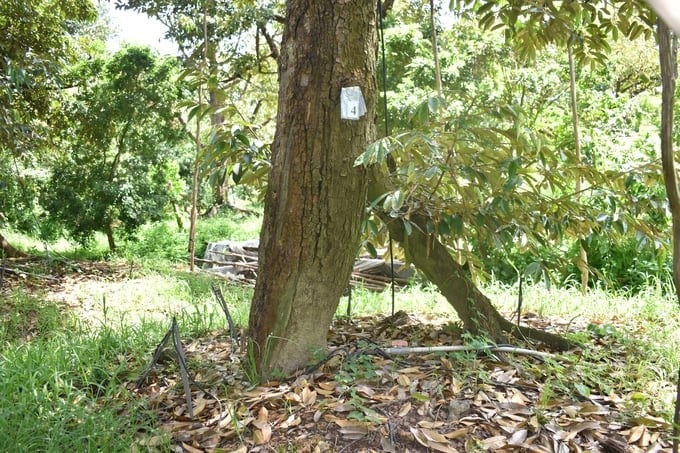
Mature durian is grafted with one secondary root, so the main root is not bottlenecked. Photo: Minh Dam.
When I imported seedlings from Thailand, they gave me an instruction book so I could graft up to 4–5 roots, depending on my wishes. Later, the root is very big but not sick, and it is able to withstand the wind on the hill. Previously, I sold seedlings with many rootstocks to the Central Highlands. Customers found it effective, so they came back to order it this way," Mr. Thanh said.
Talking about the selling price of seedlings with many rootstocks, Mr. Thanh said the price will depend on the number of secondary roots. The price of normal durian seedlings is VND 100,000/tree. As for seedlings with one secondary root, the price is VND 120,000/tree. The price of seedlings with four secondary roots is VND 180,000–200,000/tree.
Mr. Thanh added that this method can also be applied to plants propagated by grafting, such as grapefruit, lemon, orange, jackfruit, etc.
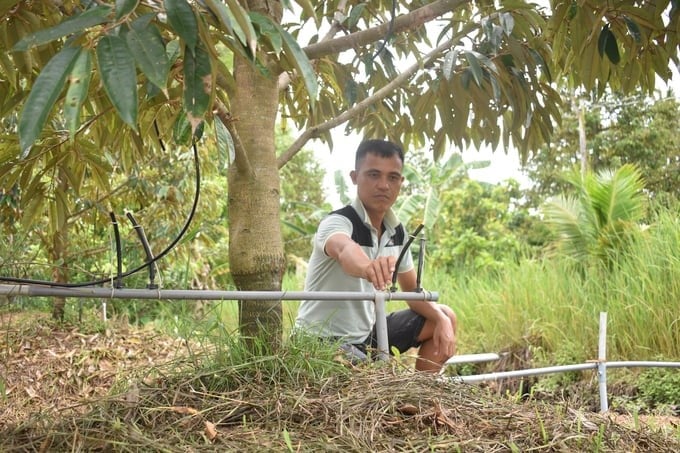
Durian trees that are not grafted with secondary roots often suffer from bottlenecks. Photo: Minh Dam.
According to Prof. Dr. Nguyen Minh Chau, former Director of the Southern Fruit Research Institute, trees grafted with secondary roots will grow very well. Each secondary root is grown from seed, so it has different genetics. When grafted, it will supplement the host tree very well. Especially the problem of being resistant to diseases and absorbing water very well. When one root system is diseased, another root system will raise the tree. Regarding quantity, he recommends grafting 2-3 secondary roots to be effective, not necessarily many.
Translated by Thu Huyen
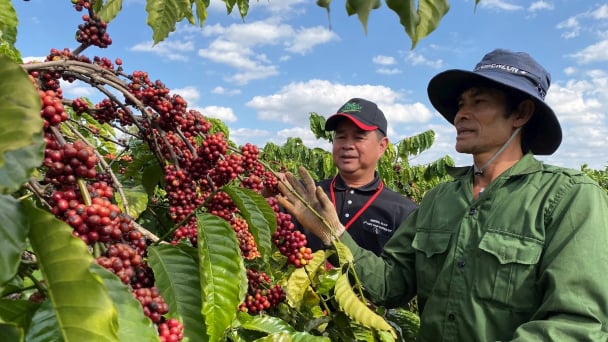
(VAN) Businesses emphasize fairness and equality when integrating social factors into their sustainable development strategies.
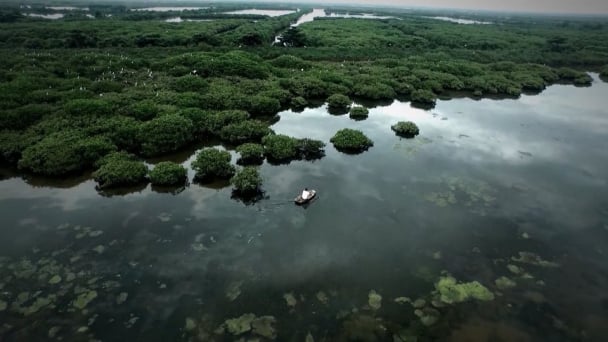
(VAN) French organizations and enterprises propose that Thai Binh province provide potential and long-term cooperation contents related to climate change response and green industrial development.
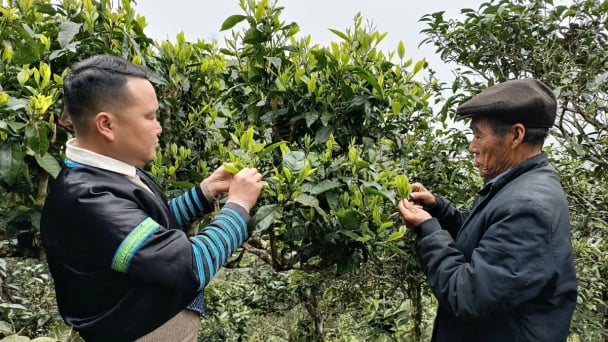
(VAN) Shan Tuyet tea is considered a 'heavenly treasure'. The H'mong people allow the tea to grow naturally, adhering to organic production principles, with the aim of exporting the product.
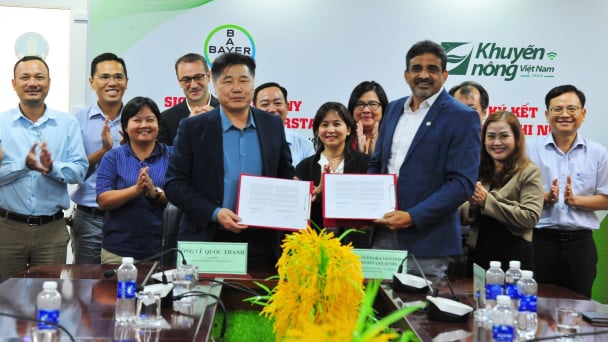
(VAN) Bayer Vietnam and the National Agricultural Extension Center have signed a partnership agreement to expand the development of effective and safe farming models for rice, durian, and coffee.
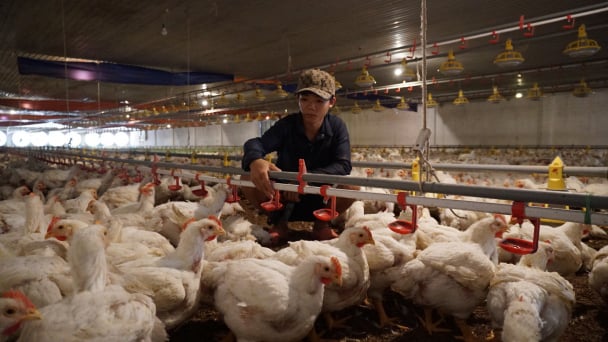
(VAN) Tay Ninh province possesses all the favorable conditions, from natural advantages to geographic location and social harmony, to drive economic development, particularly in attracting investment and advancing modern livestock farming.
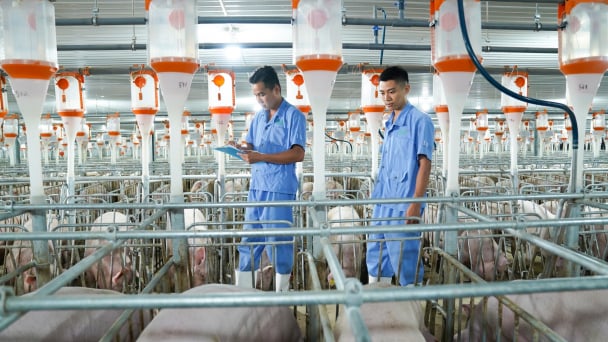
(VAN) Notably, every link in BAF's entire closed livestock value chain Feed - Farm - Food has received international certification.
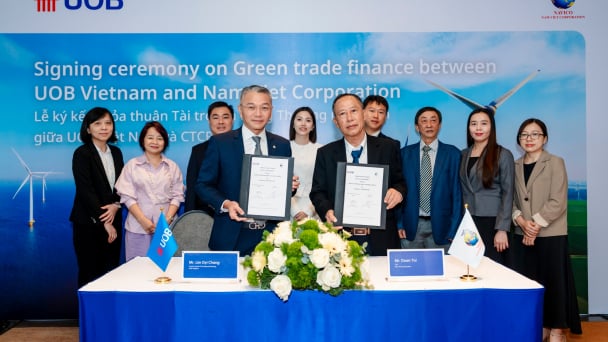
(VAN) UOB Vietnam has recently signed a green credit agreement with NAVICO to develop sustainable aquaculture that meets international standards.